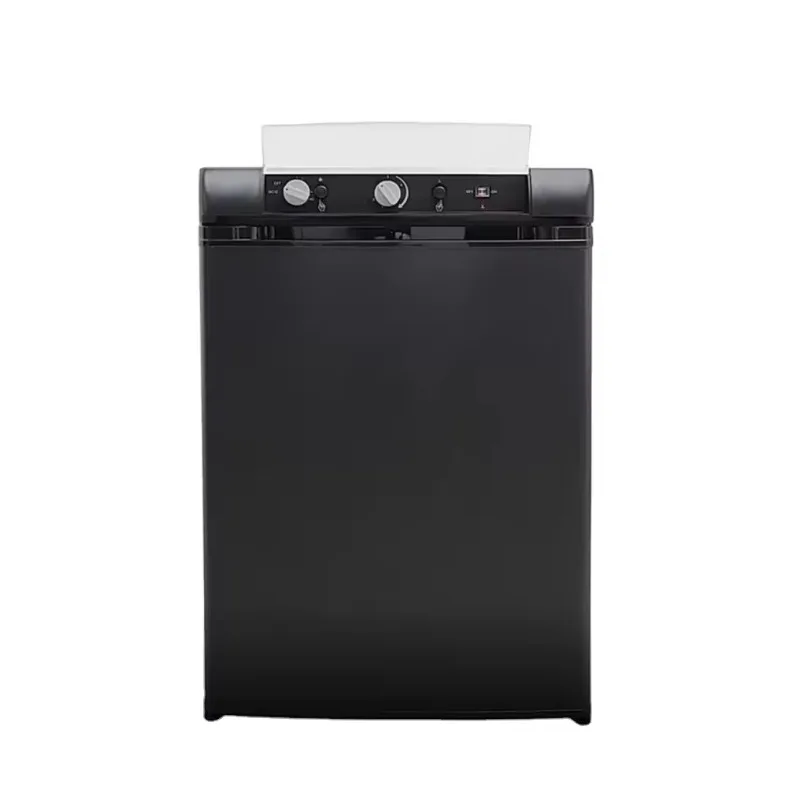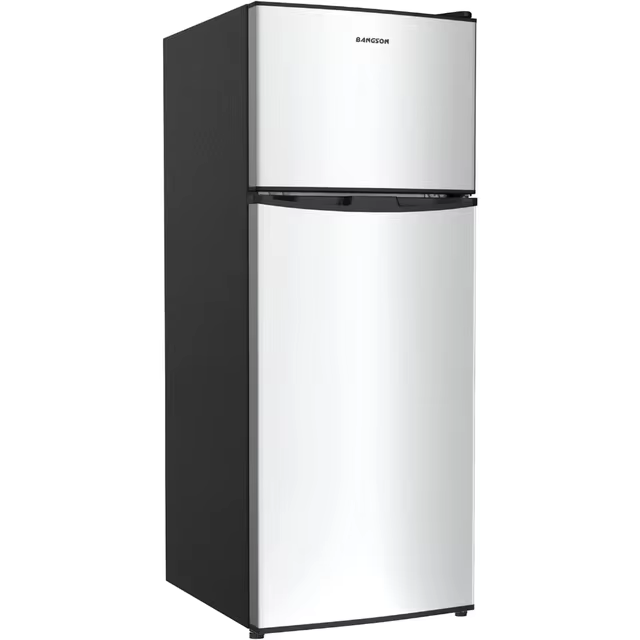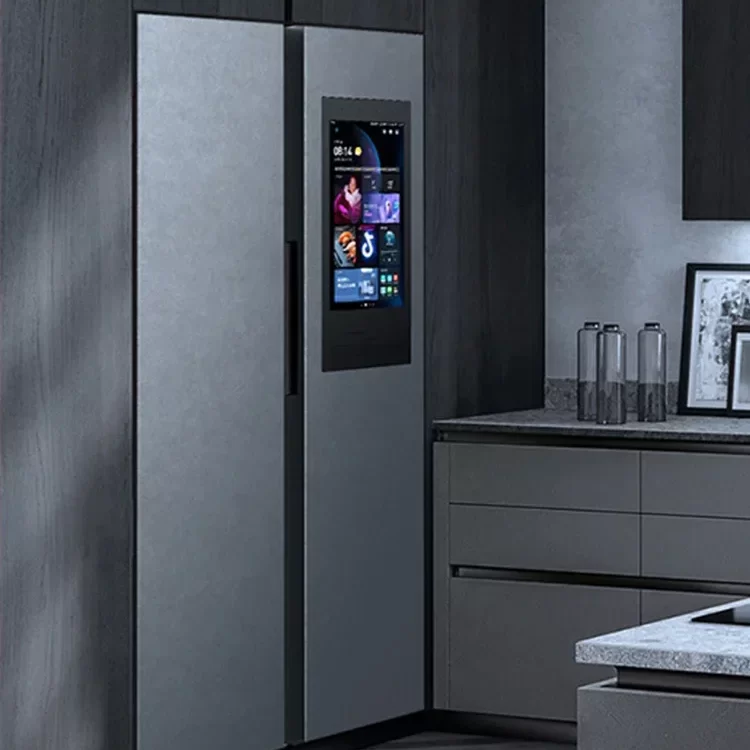The Best Temperature Range for Refrigerators
Finding the right balance in refrigerator temperature settings is key for food safety and savings. The optimal temperature for a refrigerator to be kept at is between 0°C and 4°C. This range prevents bacterial growth and food spoilage. Your refrigerator’s chiller compartment should stay close to 0°C, which is ideal for raw meats that need extra cold to stay fresh.

To maintain the safety of your food, ensure your refrigerator does not go above 4°C. Regularly check the temperature settings, particularly if you notice your food spoiling more quickly than usual. If you experience temperature fluctuations, it may indicate it’s time for a diagnostic check or potentially an upgrade to a newer model. Always target the lower end of the range if you frequently store sensitive items like raw meat or fish.
Do not set your fridge temperature too low, as it can cause fresh vegetables to freeze, becoming unusable. Always adjust your fridge temperature settings gradually to avoid shocking your food items. Additionally, use a fridge thermometer to accurately monitor the temperature, rather than relying on the fridge’s built-in gauge, which can sometimes be inaccurate. Remember, proper temperature control is fundamental to food safety and can also lead to energy savings by preventing the fridge from overworking.
The Science Behind Food Spoilage
Understanding how food spoils is key to preventing it. Several factors cause spoilage, including chemical and physical changes. Foods turn unpleasant due to ripening, going rancid, or microbial growth. Microbes like bacteria and fungi feed on food, leading to off odors, tastes, and textures.
Chemical Changes and Microbial Growth
Chemical changes, such as oxidization, cause foods like fats to become rancid. This affects flavor and safety. Microbes spoil food by eating it and multiplying. Sliced ham, for instance, becomes slimy if left too long in the fridge.
Physical Changes Impacting Food Quality
Physical changes include freezing, which can alter the cell structure of foods like lettuce, making them mushy upon thawing. Poor packaging and handling also stress foods mechanically, leading to deterioration.
By understanding the causes of food spoilage, you can better manage the conditions in your fridge. Keep sensitive items like meat very cold, and make sure your fridge is not fluctuating in temperature. This helps in keeping your food safe and tasting good, and that’s what temperature should a refrigerator be kept at – to prevent these spoilage processes.
Seasonal Adjustments to Fridge Settings
Seasonal changes can impact how your fridge functions. Adjust the temperature settings as seasons change. Turn the dial down in summer to keep food cool. In winter, set it a bit higher as the ambient temperature drops. These tweaks can reduce energy use and save you money. Your food will last longer, and it’s eco-friendly too.
Keep an eye on internal fridge temperatures when outdoor temperatures peak or plummet. Use a fridge thermometer to monitor. This is more reliable than built-in gauges. Adjusting the temperature can work against temperature fluctuations that happen with seasonal changes.
Remember, seasonal adjustments are small. No need for extreme changes. Just a slight turn of the dial can make a big difference. Always aim to keep fresh food between 0°C and 4°C. This is what temperature should a refrigerator be kept at for safety. Final tip: don’t change settings too often. Find a balance and maintain it for the season.
The Ideal Temperatures for Food Types
Proper storage temperatures are crucial for keeping food fresh and safe. Here’s what temperature should a refrigerator be kept at for different food types.
Storing Fruits and Vegetables Properly
Most fruits and vegetables thrive between 3°C to 5°C. Store them in the crisper drawer, designed for this purpose. Avoid the coldest parts, as freezing damages cell structure. Tomatoes and tropical fruits prefer room temperature.
Chiller Compartment Usage for Meats
Meat requires near 0°C, often in the chiller compartment, to prevent spoilage. If no chiller is available, place meat in the coldest fridge section. Always wrap meats well to limit air exposure.
The Right Conditions for Storing Dairy
Dairy needs slightly warmer temperatures than meat. Aim for around 4°C to 8°C, often found in the fridge door’s dairy compartment. This ensures butter and soft cheeses are ready to use yet preserved.
 Wine Storage: Finding the Perfect Balance
Wine Storage: Finding the Perfect Balance
To preserve the flavor and longevity of your wines, storing them at the right temperature is crucial. What temperature should a refrigerator be kept at for wine? A steady range between 12°C to 18°C is recommended for both reds and whites. This narrow window helps maintain your wines’ complex notes and prevents premature aging.
For short-term storage, if you don’t have a wine fridge, use your regular refrigerator but be cautious, as its standard settings could be too cold. Reds may need to warm up before serving, and whites might require a slight chill from room temperature to achieve ideal tasting conditions.
Do not confuse cellaring with serving temperatures; they are distinct. Cellaring is for aging and preserving the wine, while serving temperatures enhance the wine’s characteristics when it’s time to enjoy. Consistent temperatures are key – fluctuations can alter your wine’s taste and quality.
Be mindful that the ideal storage condition isn’t just about temperature. Vibrations, light, and humidity levels can all impact a wine’s development. Your storage area should be dark, vibration-free, and maintain a consistent humidity to protect the wine’s cork and label.
In summary, proper wine storage preserves quality, enhances flavor, and can even save you money by preventing waste. Consider investing in a wine fridge for long-term storage to keep your cherished bottles at their best.
Freezer Fundamentals: Keeping Your Food Fresh
For keeping your foods safe and fresh, your freezer plays a crucial role. The key is to maintain the right temperature. General recommendation is setting your freezer around -18°C. At this temperature, food preserves its quality over time. A reliable freezer should keep this temperature consistently to prevent food spoilage.
Maintaining Freezer Temperature
Ensure your freezer’s temperature is nearly -18°C for optimal food safety. This applies to everything from ice cream to raw chicken. Regularly check the temperature, since fluctuations can harm your food’s quality. Use a thermometer to keep track of it. Don’t adjust the temperature too frequently, as stability is important.
Understanding and Preventing Freezer Burn
Freezer burn happens when air reaches food, causing dehydration and oxidation. This makes food lose moisture and flavor. To prevent this, wrap food tightly. This minimizes exposure to air. Also, avoid leaving the freezer door open for too long. Consistent temperatures reduce the risk of freezer burn, maintaining your food’s quality.
Practical Tips for Adjusting Fridge Temperatures
Adjusting the fridge temperature may seem minor, but it makes a big difference. Here are practical ways to do it right.
- Know Your Fridge’s Controls: Locate the temperature controls. They may be inside or on the fridge front.
- Use a Thermometer: For accuracy, use a separate fridge thermometer to monitor the actual temperature.
- Make Gradual Changes: If you need to adjust, do it gradually. This prevents shocking the food.
- Check After Adding Groceries: When you add new items, check the temperature. The fridge might need a slight adjustment.
- Be Consistent: Once you find the right setting, try to keep it consistent.
- Monitor Seasons: Keep an eye on the temperature as the seasons change.
Your fridge might react differently when filled with warm groceries. If this happens, lower the temperature a bit. But, turn it back once the temperature stabilizes. Digital controls can show real-time temperatures, making this easier. However, if you have a dial, remember that a small turn can be enough.
For older fridges that struggle with temperature, consider an upgrade. A newer model might maintain temperatures better. If adjusting doesn’t work, have a service person check your fridge. You could be wasting energy and risking food safety otherwise.
Remember, the goal is to keep your food safe and save on energy bills. Manage your fridge temps well and you’ll hit both targets!
 Energy Efficiency: Saving Money with Your Fridge Settings
Energy Efficiency: Saving Money with Your Fridge Settings
Being smart about your fridge settings can lead to energy savings. Here’s how to manage your refrigerator for efficiency and cost-effectiveness.
- Adjust Seasonally: Tweak temperature settings with the seasons. Lower it in summer, raise slightly in winter.
- Avoid Overcooling: Keep your fridge cool, but not too cold. Overcooling uses more power and can freeze foods.
- Check Seals Regularly: Ensure door seals are tight. Loose seals let cold air out, wasting energy.
- Defrost Freezers: If not frost-free, defrost regularly to keep efficiency up. Ice buildup makes freezers work harder.
- Don’t Overload: Overfilling obstructs air flow. This makes the fridge work harder to cool everything down.
- Place a Thermometer: Use an appliance thermometer to check actual temperatures for accuracy.
- Close Doors Promptly: Open your fridge only when necessary and close it quickly.
Your fridge’s model and age also play roles in how much energy it uses. Older fridges tend to be less efficient. If you find that your fridge is always running or struggling to maintain ‘what temperature should a refrigerator be kept at’, it might be time to invest in a newer, energy-efficient model. In the long run, this can save you money on both energy bills and food waste.
Remember, a well-managed fridge not only keeps food safe but also lowers your energy usage and bills. So, take the time to optimize your settings and routine to get the best performance out of your appliance.
